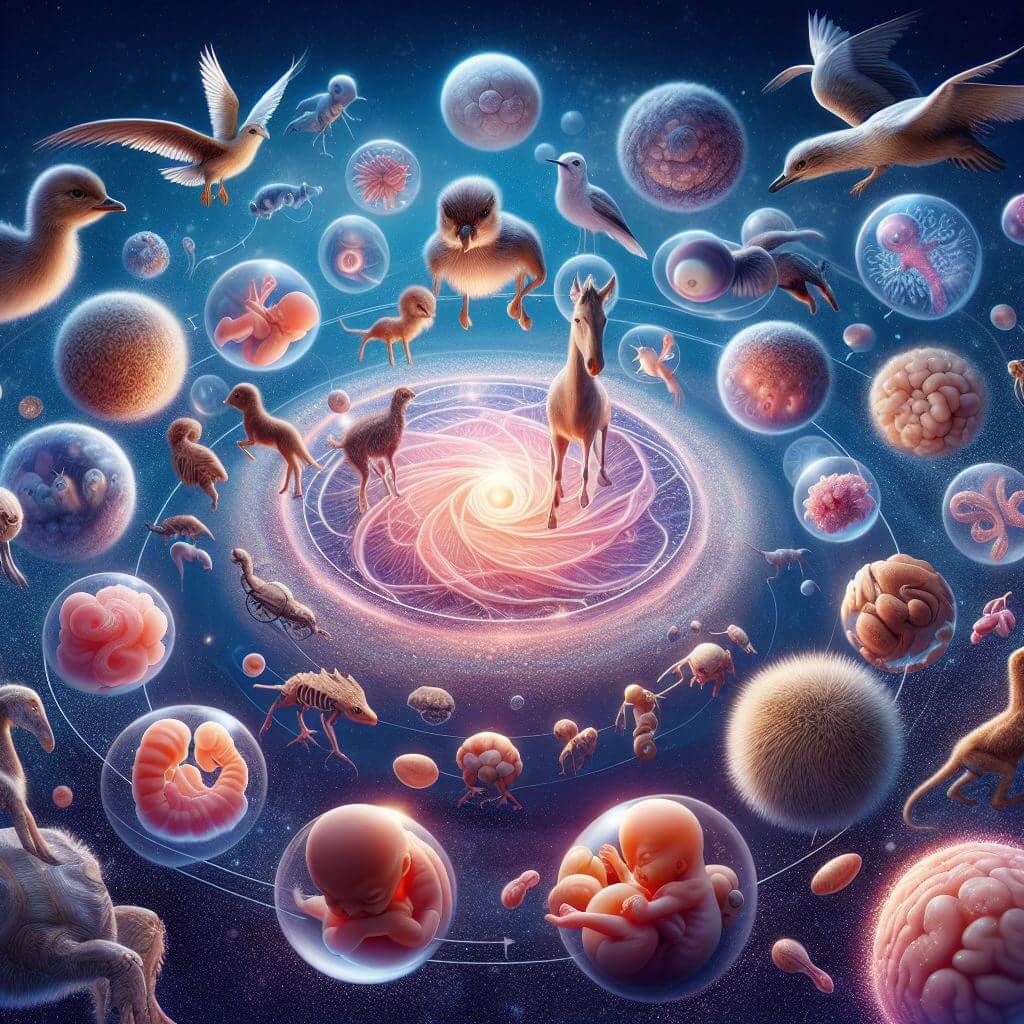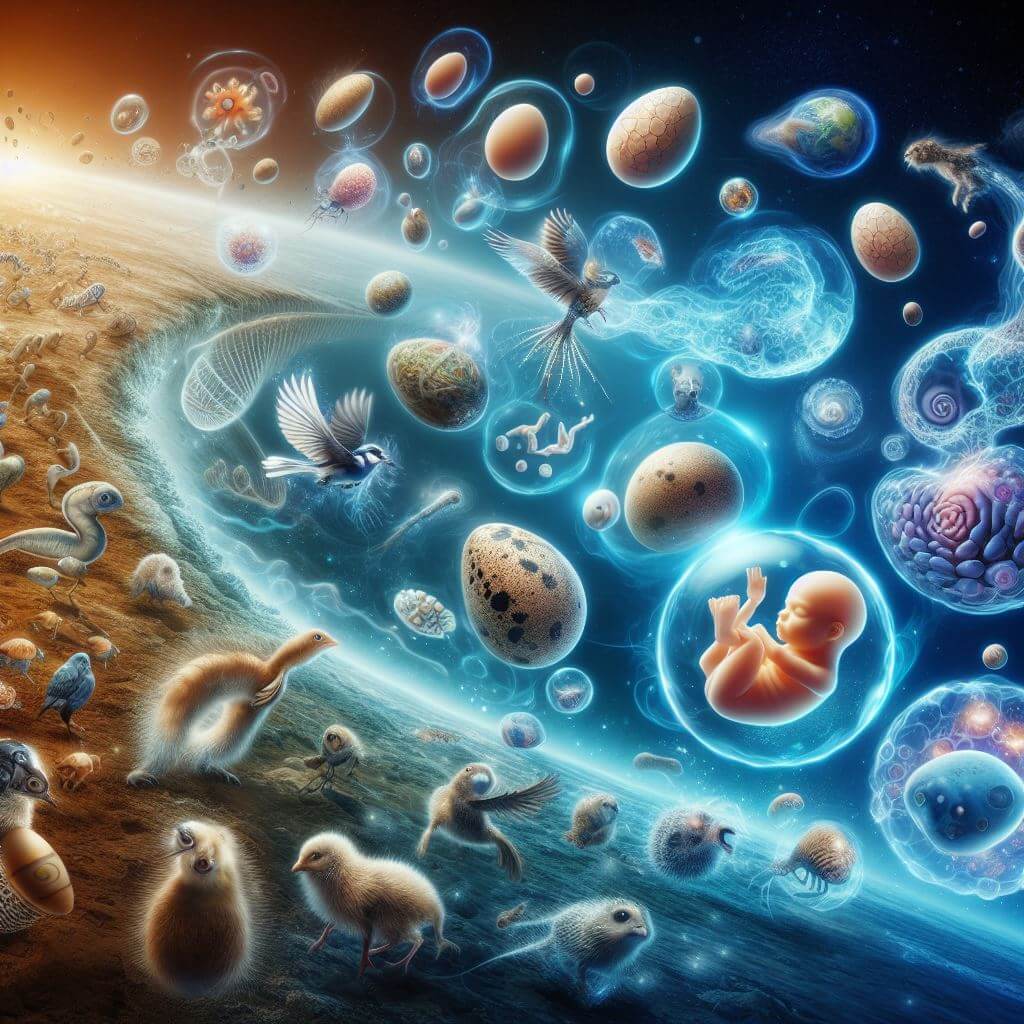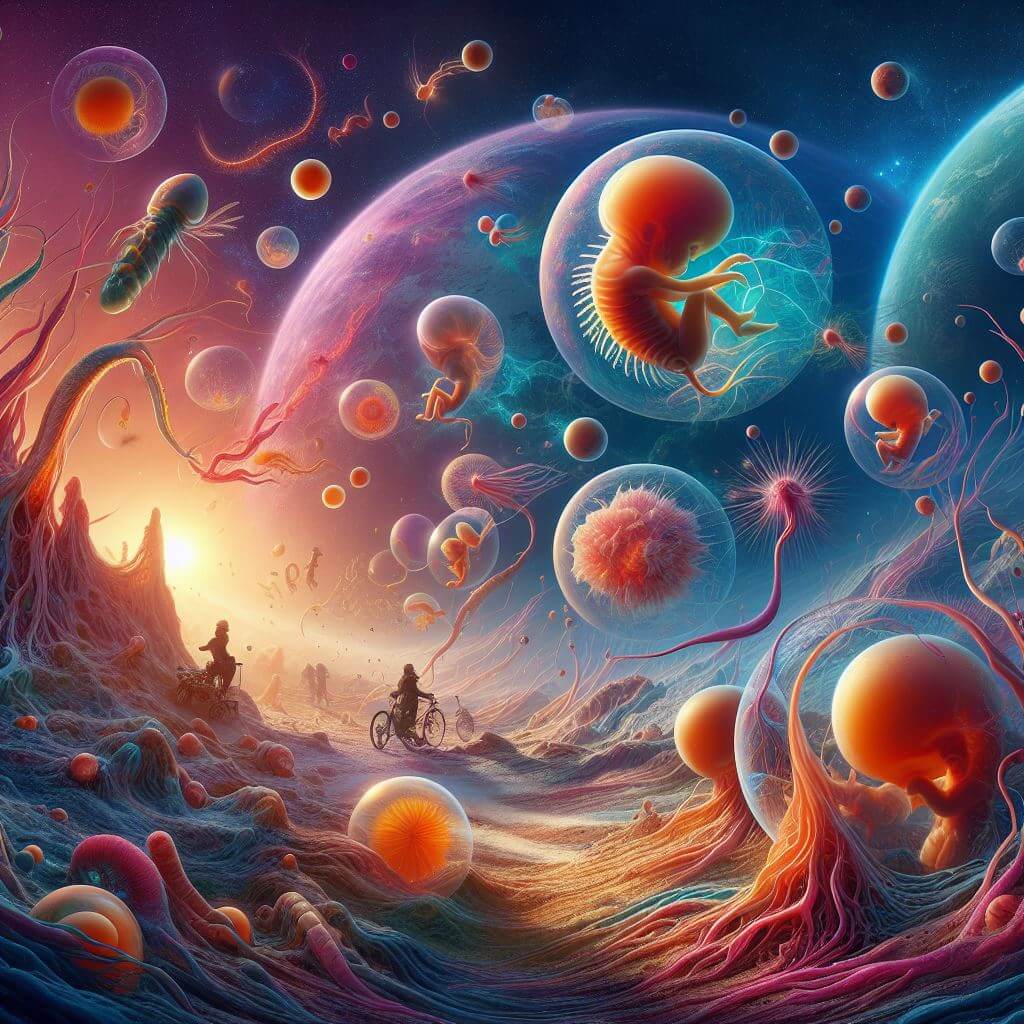Embark on a fascinating journey through the universal process of life, from the formation of fertilized eggs to the maturation of various creatures. Delve into the intricacies of embryonic development, discover the diverse ways animals bring forth new life, and gain insights into the life cycles of different species.

All methods of reproduction are alike: a bit of protoplasm separates from a parent (or two parents) and then grows into a new individual of the same kind. In seed plants and many-celled animals, this bit of protoplasm is usually a fertilized egg cell. Except in a few kinds of animals, each egg cell must be fertilized by a sperm cell of the right kind. You have learned how a flowering plant grows from a fertilized egg cell in a seed. By making Observation 9, you can see what happens as a hen’s egg develops into a chick.
A small fertilized egg cell, like that of a snail, is shaped much like a very tiny ball. As soon as the egg cell is fertilized, it begins to divide. First, the cell divides into two parts that stick together. Each part is a complete cell. Then these two cells divide again, and the egg has four cells. This division goes on so that there are soon eight cells, then sixteen, and so on. The single fertilized cell is no longer an egg but an embryo. As the cells of the embryo keep on dividing, they are still grouped together in the shape of a ball.
The inside of this ball of cells gradually becomes hollow. Then one side of the hollow ball begins to push in, much as if you took your finger and pushed in one side of a hollow rubber ball. This goes on until the ball of cells looks like the last picture in the right-hand corner of page 285. The embryo now has two layers of cells, one on the outside and the other on the inside. Next, a third layer of cells develops between these two.
From these three layers of cells, all the different parts of the body develop. Muscles, blood, and blood vessels are formed from the middle layer. The outer layer develops into the skin and the nervous system, while the linings of the digestive system, the liver, the lungs, and other organs develop from the inner layer.

In somewhat the same way, a chick develops from a layer of cells on one side of the yolk. However, the stages of development look quite different because so much food is stored inside the shell of a hen’s egg. All the time that the chick embryo is developing, it is using this stored food to grow. Oxygen diffuses into the egg through the porous shell. The egg has plenty of moisture in it. A hen or an incubator keeps the egg at about 103° F., which is the proper temperature for growth. In about 21 days the chick hatches from the egg. Then the proper food and living conditions must be provided to keep it growing.
The newly hatched chick has a soft covering of down over its body. As the chick grows, it gradually develops feathers and sheds the down. Within a few months, a male chick begins to look like a rooster and a female chick like a hen. The young chicken grows larger for about a year. All this time, the cells in its body are dividing and making new protoplasm from the food that it eats. The embryos of many other animals develop in much the same way as the chick embryo. However, they may take more or less time to develop. One table on page 286 shows how long the embryos of various animals take to develop from a fertilized egg cell into a young animal that is hatched or born.
All the animals listed in the table are classified as vertebrates because they all have backbones. They also have other characteristics of structure that are alike, and many stages of their growth are similar. However, there is one important difference among them. Some vertebrate animals lay eggs from which their young hatch, while the others give birth to their young. The egg-laying animals must store enough food in each egg to supply the developing embryo until it hatches. So the eggs of these animals are quite large. However, in animals that give birth to their young, food for the growing embryo is supplied by the mother. So the eggs of these animals are smaller because they contain little stored food.

For the most part, human beings have about the same life cycle as other mammals. When a human being is a baby, this stage of life is known as infancy. During this stage and later, much of the skeleton is made of flexible cartilage. This is gradually replaced by bone as growth goes on. Infancy is followed by childhood, and then comes adolescence. During this stage boys and girls are changing into young men and women, or adults. Human beings grow rapidly until they are mature, or full grown. Then their growth slows down and finally stops. After many years they die. One table on page 286 shows how long some familiar animals usually live. Notice that the usual age of a mouse is only 2 years, but that of the elephant is about 60 years.